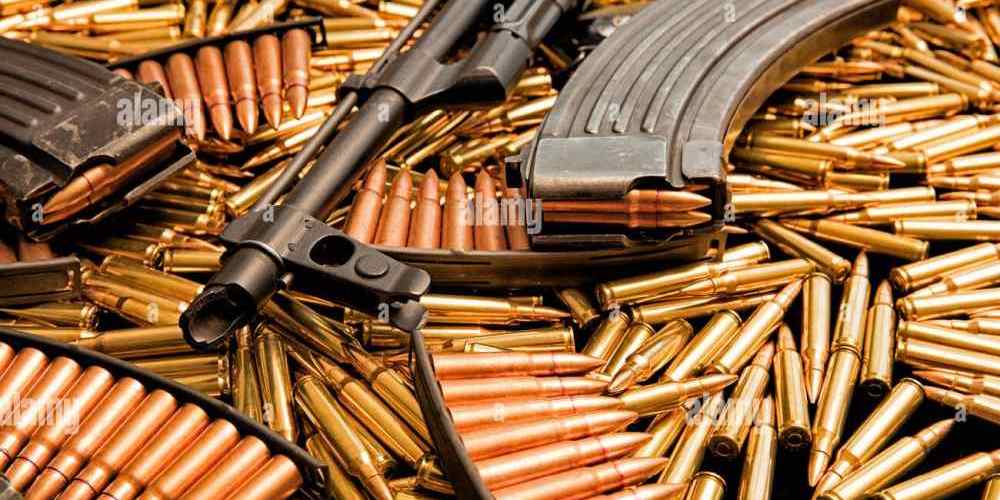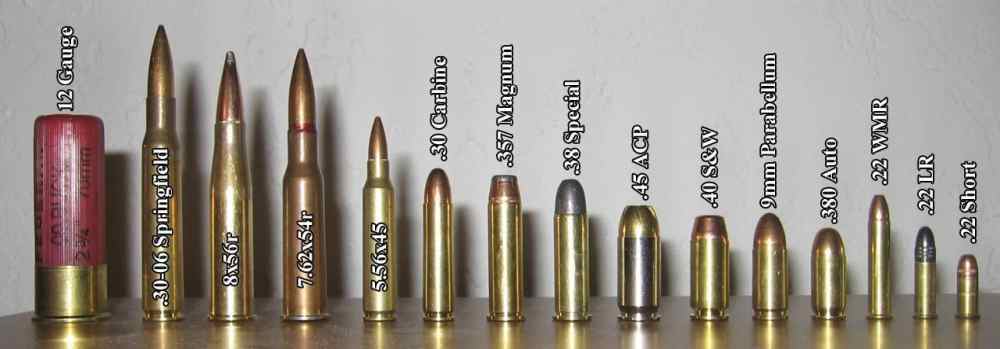“Rimfire vs. Centerfire: Igniting Precision and Power in Every Shot”
Rimfire vs. Centerfire: Understanding the Basics of Rifle Ammunition
Rimfire vs. Centerfire: A Rifle Ammunition Comparison
When it comes to rifle ammunition, the distinction between rimfire and centerfire cartridges is fundamental, yet it often confuses new shooters. Understanding the differences between these two types of ammunition is crucial for anyone interested in firearms, whether for sport shooting, hunting, or personal defense. Both rimfire and centerfire cartridges have unique characteristics that make them suitable for different applications, and by delving into the technical aspects of each, we can appreciate their respective advantages and limitations. At the heart of the rimfire vs. centerfire debate is the location and mechanism of the primer ignition. Rimfire cartridges, as the name suggests, have the priming compound located in the rim of the casing. When the firing pin of the rifle strikes the rim, it crushes this area, igniting the primer and subsequently the gunpowder within the cartridge. This design is simple and cost-effective, making rimfire ammunition generally less expensive than centerfire. The most common rimfire caliber is the .22 Long Rifle (LR), which is widely used for small game hunting, target shooting, and training due to its low recoil and noise. Conversely, centerfire cartridges have the primer located at the center of the base of the cartridge casing. When struck by the firing pin, the primer detonates and ignites the powder charge. This central primer location is more robust and reliable, especially for higher pressures, which is why centerfire ammunition is preferred for larger calibers and more serious applications such as big game hunting or tactical use. Additionally, centerfire casings are typically made of brass and are reloadable, allowing shooters to replace the spent primer, powder, and bullet, which is not possible with the one-time-use rimfire casings. The reliability of centerfire ammunition is one of its most significant advantages. The central primer is less susceptible to manufacturing variances and offers consistent performance even in adverse conditions. This reliability, combined with the ability to handle higher pressures, means that centerfire cartridges can be loaded with heavier bullets and achieve greater velocities and energy, making them suitable for taking down larger game at longer distances. However, the increased power and versatility of centerfire ammunition come at a cost. Not only is the ammunition itself more expensive, but the firearms designed to shoot it are often heavier and more robustly constructed, which can be a consideration for those who carry a rifle for extended periods. The recoil associated with centerfire rifles can also be more pronounced, which may not be ideal for all shooters, particularly those who are recoil sensitive or in training scenarios where many rounds are fired in succession. In contrast, rimfire rifles are typically lighter, easier to handle, and have virtually no recoil, making them excellent choices for introducing new shooters to the sport. The affordability of rimfire ammunition encourages practice and skill development without breaking the bank. While limited in power and not suitable for all hunting applications, rimfire cartridges like the .22 LR remain incredibly popular for their practicality and fun factor. In conclusion, both rimfire and centerfire ammunition have their place in the world of rifle shooting. Rimfire offers an affordable, low-recoil experience ideal for casual shooting and small game hunting, while centerfire provides the power and reliability needed for more serious endeavors. understanding these differences allows shooters to make informed decisions about the type of ammunition that best suits their needs, ensuring a safe and enjoyable shooting experience. Whether plinking at the range with a .22 or tracking big game with a powerful centerfire rifle, the choice between rimfire and centerfire ultimately comes down to the intended use and personal preference of the shooter.
The Pros and Cons of Rimfire and Centerfire Ammunition for Rifles
Rimfire vs. Centerfire: A Rifle Ammunition Comparison
When it comes to rifle ammunition, the debate between rimfire and centerfire cartridges is a longstanding one, with each type offering distinct advantages and drawbacks. Understanding the pros and cons of both can help shooters make informed decisions based on their specific needs, whether for hunting, target shooting, or plinking. Rimfire ammunition is named for the firing pin striking the rim of the cartridge to ignite the primer. This design is inherently simple and cost-effective, making rimfire cartridges, such as the ubiquitous .22 Long Rifle, popular for casual shooting and small game hunting. The affordability of rimfire ammo encourages practice and skill development, as shooters can fire many rounds without significant financial strain. Additionally, rimfire rifles are often lighter and have less recoil, which is particularly advantageous for new or young shooters who are just getting accustomed to the sport. However, the simplicity of rimfire cartridges comes with limitations. The thin casing, necessary for the firing pin to crush the rim and ignite the primer, restricts the amount of gunpowder they can safely contain. This results in lower power and velocity compared to centerfire cartridges, limiting the effective range and stopping power of rimfire ammunition. Consequently, rimfire rounds are generally unsuitable for larger game and long-distance shooting. Moreover, rimfire primers are not as reliable as centerfire primers, leading to a higher rate of misfires and duds. Transitioning to centerfire ammunition, the primer is located at the center of the cartridge base, which is struck by the firing pin to ignite the powder. This design allows for thicker, more robust casings that can handle higher pressures, translating into greater power and longer effective ranges. Centerfire cartridges are the go-to choice for most hunting and tactical applications due to their reliability and versatility. They can be loaded with a wide variety of bullet weights and types, making them suitable for everything from varmint control to big game hunting and self-defense. The reliability of centerfire cartridges is another significant advantage. The central primer is more consistently ignited, resulting in fewer misfires. This reliability, combined with the ability to withstand multiple reloads, makes centerfire ammunition highly valued by shooters who demand performance and dependability. However, this performance comes at a cost. Centerfire ammunition is generally more expensive than rimfire, both in terms of initial purchase and reloading expenses. The increased power also means more recoil, which can be a concern for those sensitive to the physical kick of firing a rifle. In conclusion, both rimfire and centerfire ammunition have their place in the world of shooting sports. Rimfire rounds offer an economical and low-recoil option for casual shooting and small game hunting, while centerfire cartridges provide the power, range, and reliability required for more serious applications. Shooters must weigh these pros and cons against their intended use, budget, and personal preferences. Whether plinking with a .22 or tracking large game with a high-caliber centerfire rifle, understanding the characteristics of each type of ammunition ensures a safe, enjoyable, and successful shooting experience.
Choosing the Right Rifle Ammunition: Rimfire vs. Centerfire Performance Analysis
Rimfire vs. Centerfire: A Rifle Ammunition Comparison
choosing the right rifle ammunition can be a daunting task, especially when faced with the technical jargon and myriad options available on the market. Two of the most common types of ammunition that rifle enthusiasts encounter are rimfire and centerfire cartridges. Understanding the performance characteristics of each can help shooters make informed decisions based on their shooting needs, whether for hunting, target practice, or competition shooting. Rimfire ammunition is named for the firing pin striking the rim of the cartridge to ignite the primer. This type of ammunition is typically found in smaller calibers, such as the popular .22 Long Rifle (LR). The construction of rimfire cartridges is relatively simple and cost-effective, as the casing is usually made of thin brass with the primer compound spun inside the rim. This simplicity translates to lower manufacturing costs, making rimfire ammunition an economical choice for casual plinking and small game hunting. However, the thin casing limits the amount of gunpowder that can be safely contained, which in turn restricts the power and effective range of rimfire cartridges. As a result, rimfire rounds are generally considered suitable for short-range shooting and are not recommended for larger game or long-distance accuracy. Transitioning to centerfire cartridges, the design is markedly different. The primer is located at the center of the cartridge base, hence the name “centerfire.” When the firing pin strikes the primer, it ignites the gunpowder and propels the bullet forward. Centerfire ammunition is available in a vast array of calibers, from the diminutive .17 Remington to the formidable .50 BMG. The robust construction of centerfire cartridges allows them to handle higher pressures, enabling more powerful loads and extending the effective range of the ammunition. This makes centerfire rounds the go-to choice for most hunting scenarios, especially when pursuing medium to large game, and for long-range target shooting where precision is paramount. Another advantage of centerfire ammunition is its reliability. The centralized primer is less prone to failure than the rimfire’s spun-in primer, which can lead to misfires if not distributed evenly. Additionally, centerfire casings are typically made of thicker brass or steel, which not only withstands higher pressures but also allows for the cartridges to be reloaded. Reloading is a process where shooters can reuse spent casings by replacing the primer, powder, and bullet, offering a cost-saving benefit over time and the ability to customize loads for specific shooting applications. When it comes to choosing between rimfire and centerfire ammunition, the decision largely hinges on the intended use. For those engaging in casual target shooting or hunting small varmints, rimfire rounds offer a cost-effective and low-recoil option. On the other hand, centerfire ammunition is the clear choice for more serious endeavors that demand higher power, greater range, and increased reliability. It’s also worth noting that while rimfire ammunition is generally cheaper per round, the ability to reload centerfire cartridges can offset the initial higher cost for frequent shooters. In conclusion, both rimfire and centerfire rifle ammunition have their place in the shooter’s arsenal. By analyzing the performance aspects of each type, shooters can select the appropriate ammunition to match their specific needs, ensuring a successful and enjoyable shooting experience. Whether plinking with .22 LR or taking down game at a distance with a .308 Winchester, understanding the nuances between rimfire and centerfire cartridges is an essential part of the shooting sports.








